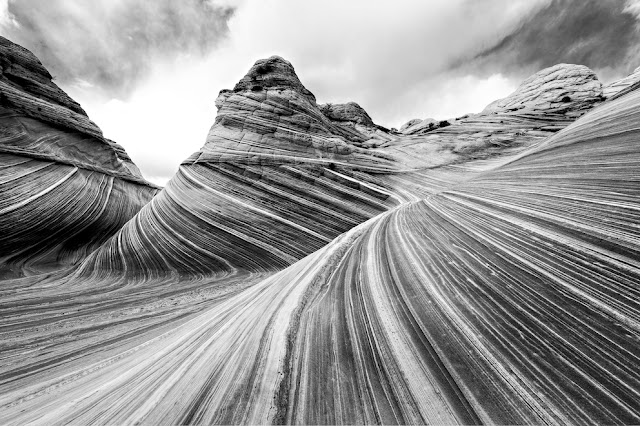VITTORIO SELLA (1859-1943)
Alexandra Peak / Mount Stanley (5, 091m)
Congo - Uganda border
In Alexandra peak , western glacier, photographie à la chambre, 1906
Le photographe
Vittorio Sella est un alpiniste et photographe italien qui a hérité sa passion pour la montagne de son oncle, Quintino Sella, fondateur du Club Alpin Italien. Il accomplit de nombreuses ascensions remarquables dans les Alpes, le premier hivernage au Cervin et au Mont Rose (1882) et la première traversée hivernale du
Mont Blanc (1888) et des Rouies (1900).
Il participe à diverses expéditions hors d'Italie :
- Trois dans le Caucase en 1889, 1890 et 1896 où un sommet porte encore son nom ;
- L'ascension du Mont Saint Elias en Alaska en 1897 ;
- Sikkim et Népal en 1899 ;
- Gravit le mont Stanley en Ouganda en 1906 lors d'une expédition dans le Rwenzori ;
- Reconnaissance au K2 en 1909 ;
- Au Maroc en 1925.
Lors d'expéditions en Alaska, en Ouganda et au Karakoram, il accompagne le duc des Abruzzes, le prince Luigi Amedeo di Savoia.
Sella continue la pratique de l'escalade jusqu'à ses vieux jours, complétant sa dernière tentative sur le Cervin à l'âge de 76 ans ; une ascension dont il a dû interrompre la montée suite à un accident dans lequel l'un de ses guides s'est blessé. Il mourut dans sa ville natale pendant la Seconde Guerre mondiale. Sa collection photographique est désormais gérée par la Fondation Sella.
Ses photos de montagne sont encore aujourd'hui considérées comme parmi les plus belles jamais réalisées.
Jim Curran estime que « Sella reste probablement le plus grand photographe de montagne. Son nom est synonyme de perfection technique et de raffinement esthétique. »
La qualité des images de Vittorio Sella s'explique en partie par l'utilisation d'une caméra de visualisation 30 × 40 cm, malgré la difficulté de transport d'un tel appareil, à la fois lourd et fragile dans des endroits inaccessibles ; pour pouvoir le transporter en toute sécurité, il a dû fabriquer des pièces spéciales pouvant être rangées dans des sacoches. Ses photographies ont été largement diffusées, soit dans la presse, soit dans les galeries, et ont été unanimement saluées ; Ansel Adams, qui a pu en admirer trente et un lors d'une exposition organisée au Sella American Sierra Club, a déclaré qu'ils lui avaient inspiré « un sentiment d'émerveillement religieux ». Beaucoup de ses clichés ont été pris en montagne pour la toute première fois dans l'Histoire, ce qui leur confère une grande valeur artistique, historique mais aussi scientifique ; par exemple, on pourrait mesurer le déclin des glaciers du Rwenzori en Afrique centrale.
La montagne
Le pic Alexandra (5 091 m) fait partie du mont Stanley situé dans la chaîne du Rwenzori, la plus haute montagne de la République démocratique du Congo et de l'Ouganda, et la troisième plus haute d'Afrique, après le mont Kilimandjaro (5 895 m). et le mont Kenya (5 199 m).
Le mont Stanley se compose de deux sommets jumeaux et de plusieurs sommets inférieurs qui sont :
Pic Margherita (5 109 m), Pic Alexandra (5 091 m), Pic Albert (5 087 m), Pic Savoia (4 977 m - 16 330 pieds), Pic Ellena (4 968 m - 16 300 pieds), Elizabeth Peak (4 929 m), Phillip Peak (4 920 m), Moebius Peak (4 916 m) et Great Tooth (4 603 m).
Le pic et plusieurs autres sommets environnants sont suffisamment hauts pour supporter des glaciers. Le mont Stanley doit son nom au journaliste et explorateur Sir Henry Morton Stanley. Il fait partie du parc national des Monts Rwenzori, un site classé au patrimoine mondial de l'UNESCO.
Le mont Stanley a été escaladé pour la première fois en 1906 par le prince Luigi Amedeo di Savoia, duc des Abruzzes (1873-1933), J. Petigax, C. Ollier et J. Brocherel. Il est également connu pour ses explorations de l'Arctique et pour ses expéditions d'alpinisme, notamment au Mont Saint Elias (Alaska-Yukon) et au K2 (Pakistan-Chine). Margherita Peak doit son nom à la reine Margherita d'Italie, cousine du prince.
______________________________________
2024 - Gravir les montagnes en peinture
Un blog de Francis Rousseau

%20Moon%20and%20Half%20Dome,%20Yosemite%20National%20Park,%20California%201960,%20printed%201974%20Medium:%20Gelatin%20silver%20print%20The%20Metropolitan%20Museum%20of%20Art,%20New%20York%20(Gift%20of%20Ansel%20&%20Virginia%20Adams).jpg)
%20-%20Mount%20Williamson%20Sierra%20NEvada%20%201944.jpg)
-%20K2%20%20in%201909.jpg)










